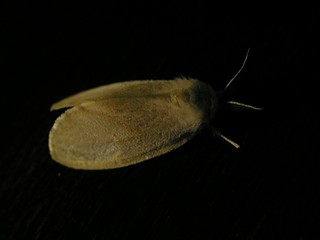Dichotomous Key to Mumbai's Lepidopteran Superfamilies
The key
This dichotomous key is a work in progress. Comments are welcome, and will be acknowledged.
- 1: Are the antennae clubbed (capitate or clavate)?
-
If yes, then butterflies. Go to 2.
If not, then go to 3. - 2: Are the antenna clubs elongated or hooked?
-
If yes, then skippers (superfamily Hesperioidea).
If not, then other butterflies (superfamily Papilionoidea). - 3: Are the antennae long, wiry and held back against its body, when at rest?
-
If yes, then snouted moths (superfamily Pyralidoidea). To confirm check
that the head has a protruding snout with two prominent globular compound
eyes on either side of the snout.
If not, then go to 4. - 4: Are all four wings, forewings and hindwings, visible when the moth is at rest?
-
If yes, then go to 5.
If no, then superfamily Noctuoidea. These are larger than 1 cm. - 5: Are the forewings triangular?
-
If yes, then go to 6.
If no, then go to 7 - 6: Is it fat bodied?
-
If yes, then it is in superfamily Bombicoidea. These are generally large:
from 4-10 cm or more.
If no, then superfamily Geometroidea. These are usually 2 cm or larger. If the hindwing is tailed then it is in family Uraniidae. - 7: Are the hindwings transparent?
-
If yes, then superfamily Cossoidea (Sesioidea).
If not, then go to 8. - 8: Are the forewings narrow plumes and the hindwings divided into three lobes?
-
If yes, then plume moths (superfamily Pterophoroidea).
If not, then superfamily Alucitoidea. Both sets of wings are divided into six lobes.
The logic of this key

The amateur lepidopterist faces a hard task for a very fundamental reason. The classification of moths is based on characteristics which are not always apparent in the field. As a result, any attempt at systematic identification based on visual characterization will eventually fail, and one will have to resort to scanning lists of pictures to find a match. Such books, called Field Guides, are the usual weapon of an amateur lepidopterist, or ornithologist. In this page I take a complementary approach and examine whether a systematic visual identification can be made at the superfamily level.
The problem of systematic visual identification is nicely illustrated by the superfamily Noctuoidea. There seems to be strong evidence that this superfamily is monophyletic. Its identification is based on the presence of a single anatomic characteristic: the existence of a metathoracic tympanum (see here). At the same time, the families contained in Noctuoidea have very different shapes, as shown in the chart here.
The logic of this key relates to the partial taxonomic list. Questions 1, 2 and 3 complete the identification of the common superfamilies in clade Obtectomera. Questions 4, 5 and 6 do the same for clade Macroheterocera. Questions 7 and 8 then relate to identification within clade Apoditrysia.
